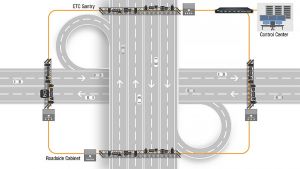
What is Your Game Plan for Fulfilling Diverse Network Requirements?
With IIoT applications on the rise, we are moving towards a smarter future where various machines, equipment, and applications are interconnected. Industries around the world are already taking full advantage of IIoT technology to seize new opportunities for innovation. However, as the number and types of end devices keeps changing, how do you deal with the increasing complexity in the various stages of your industrial network’s lifecycle?
Challenges
When you think of introducing IIoT into your network, consider the following likely challenges:
- How do you estimate the number and type of Ethernet switches you will need to accommodate the growing network scale?
- With video surveillance becoming an essential part of industrial control and monitoring processes, how do you integrate bandwidth-intensive connections with sufficient PoE power delivery?
- How do you ensure maximum uptime in increasingly sophisticated network infrastructure?
- Complex network topologies make daily operations and maintenance more difficult. How do you reduce the hidden cost and increased overhead of managing complicated networks?
 Let’s take electronic toll collection (ETC) networks as a practical example to illustrate such complex network requirements and challenges in the context of modern-day transportation infrastructure.
Let’s take electronic toll collection (ETC) networks as a practical example to illustrate such complex network requirements and challenges in the context of modern-day transportation infrastructure.
Diverse Network Requirements
Many expressways use ETC systems to collect tolls through connected toll gantries. These installations capture and transmit data and images in a matter of milliseconds when vehicles pass through them.
Although all toll gantries share the same function, each one requires its own customised network segment to support its local facility, which varies in scale, capacity, and functionality. For example, where some toll gantries take charge of wider road sections with more lanes, other gantries house additional speed detection equipment, cameras, or traffic signage.
These diverse needs in ETC networks lead to higher costs and more overhead in several areas as integrators need to:
- Evaluate each toll gantry installation to determine the required number and types of Ethernet switches tailored to the respective network segment.
- Plan and manage spare switch part inventory for in-time maintenance.
- Review connectivity requirements when adding or changing switches if the network topology changes.
High Costs to Prevent Downtime
Demanding outdoor operating conditions such as extreme temperatures, high humidity, and dust, all wear down network equipment at a much faster pace. Worn equipment, in turn, can lead to network instability and costly downtime.
Therefore, spending additional resources on purchasing spare switch parts, performing frequent inspections, and prompt troubleshooting is essential to minimising downtime.
Complicated Management
To ensure that every driver pays and passes through the tollgate smoothly, the entire ETC system relies on full collaboration between various subsystems for vehicle detection, toll deduction, and surveillance functions.
Running so many subsystems makes it difficult to oversee the entire network. Network operators often have to follow time-consuming procedures to identify network problems and spend additional time locating the problematic device before being able to dispatch an engineer for on-site troubleshooting.
Industrial Network Remedies
With over 30 years of industrial networking experience, we fully understand the concerns and challenges that come with evolving network needs. Having delivered many successful answers to Moxa‘s customers’ problems, Moxa has a proven ability to provide solutions and ideas that help ease these pressing challenges with their IIoT applications.
Smart Flexibility as a Strategy
When dealing with diverse connectivity requirements such as demonstrated in the ETC scenario, we recommend opting for industrial modular Ethernet switches which provide great flexibility and lower the total cost of ownership (TCO) through the following advantages:
- Mix and match multiple types of media interface modules on a single switch to adapt to various connectivity scenarios.
- Swap out interface and power modules when necessary without shutting down the system. The hot-swappable design simplifies network adaptation and maintenance.
- Having common interface and power modules used in all networking stations saves costs by cutting down on spare part inventory, reduces part lead-times, and simplifies staff training and overall maintenance.
Reliability as a Cornerstone
Network reliability is essential to prevent downtime and loss of productivity. At the foundation of all resilient network infrastructure are rugged switches with millisecond failover redundancy and extreme temperature tolerance for operating reliably in tough environmental conditions.
Based on Moxa’s accumulated industry experience, we further recommend you choose Ethernet switches that meet specific industry standards for specific application environments.
Designs for Efficiency
As networks expand, cabinets need to house more equipment in the same space. Compact-sized network devices allow for more expansion options within these space limitations. Having multiple mounting options also provides additional installation flexibility.
When managing a large and busy network, it is vital to have an intuitive and user-friendly management interface that displays at-a-glance device status information, is easy to navigate, and makes configuring different devices straightforward and accessible.
Furthermore, it is helpful to have a network management tool that can push real-time alerts to your mobile phone to keep you posted on the status of your network when you’re on the move.


A Move to Lasting Success
While the challenges of ever-changing IIoT applications networks may be daunting, there are great opportunities to improve the productivity of your industrial applications.
Using Moxa‘s expertise in industrial networking, we designed the MDS-G4000 Series modular switches that offer out-of-the-box adaptability for future-proof flexibility, enhanced reliability, and usability to meet the needs of your IIoT applications.
Smaller than a 3U half-rack, Moxa’s MDS-G4000 Series industrial switches offer 12/20/28-port Gigabit fully encapsulated modularity, perfect for on-demand network adaptation, link aggregation, and installation in confined spaces and harsh environments, such as in power substation, mining, and oil and gas applications.
